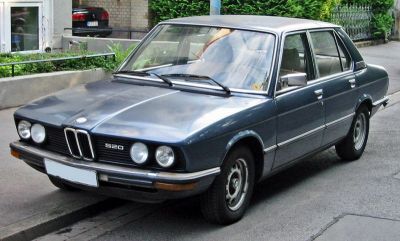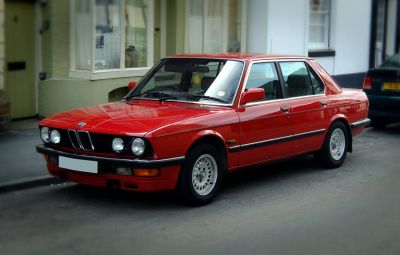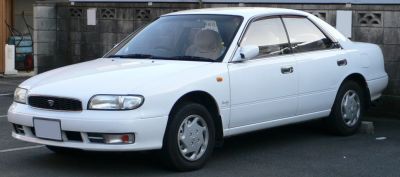 1996 Toyota Corona Premio (T21) Dimensions, Size & Specs
1996 Toyota Corona Premio (T21) Dimensions, Size & SpecsMeasurements of the 1996 Toyota Corona Premio, engineered for optimal performance and comfort
| Dimensions | |
|---|---|
| Length: | 4600 mm181.1 in15.1 ft |
| Width: | 1695 mm66.7 in5.6 ft |
| Height: | 1410 mm55.5 in4.6 ft |
| Trunk Capacity: | 490 liter17.3 cu ft |
| Weight Specifications | |
| Curb Weight: | 1110-1200 kg2447-2646 lbs |
| Maximal permitted Weight: | 1385-1475 kg3053-3252 lbs |
| Tire Specifications | |
| Rims Size: |
|
| Tire Sizes: |
|
The Toyota Corona Premio (T21) represents an important generation of the trusted Toyota Corona sedan line, produced between 1996 and 2001. This model bridges compact styling with comfortable mid-size sedan practicality, making it a favored choice in its class during the late 1990s and early 2000s. The car measures 4600 mm (181.1 inches) in length, 1695 mm (66.7 inches) in width, and stands at 1410 mm (55.5 inches) tall, positioning it comfortably in the mid-size sedan segment. With a curb weight ranging between 1110 to 1200 kg (2447 to 2645 lbs), the Corona Premio balances weight and efficiency, complementing its moderate footprint. It supports a maximum weight (gross vehicle weight) between 1385 to 1475 kg (3054 to 3252 lbs), allowing for robust passenger and cargo capacity. Speaking of cargo, the sedan offers a generous luggage space of 490 liters (17.3 cubic feet), well suited for family trips or daily errands. The vehicle rolls on 14-inch rims fitted with tires sized either 175/70 R14, 175/70 R14 S, or 185/65 R14 S, highlighting its focus on ride comfort and stability. Overall, the Toyota Corona Premio (T21) sedan from 1996 to 2001 features a design and size that emphasize practicality, fuel efficiency, and user-friendly dimensions, making it a noteworthy option for drivers seeking a reliable and reasonably spacious sedan in the compact to mid-size category.
Discover the standout features that make the 1996 Toyota Corona Premio a leader in its class
Have a question? Please check our knowledgebase first.
The Toyota Corona Premio (T21) sedan produced between 1996 and 2001 features a length of 4600 mm (181.1 inches), a width of 1695 mm (66.7 inches), and a height of 1410 mm (55.5 inches). These dimensions offer a balanced size for a mid-sized sedan, providing a comfortable cabin space while remaining manageable in urban driving and parking situations.
The curb weight of the Toyota Corona Premio (T21) ranges from 1110 to 1200 kg (2447 to 2645 lbs). This relatively light weight for a mid-sized sedan translates to improved fuel efficiency and nimble handling. The variation in weight can depend on trim levels, optional equipment, and regional specifications, affecting performance, suspension tuning, and ride quality.
The maximum weight or gross vehicle weight rating (GVWR) of the Toyota Corona Premio (T21) ranges between 1385 kg and 1475 kg (3054 to 3251 lbs). This includes the vehicle's own weight plus passengers, cargo, and fuel. Staying within this limit is crucial for safety, ensuring the suspension, brakes, and tires perform optimally under loaded conditions.
The Toyota Corona Premio (T21) boasts a luggage capacity of approximately 490 liters (17.3 cubic feet). This trunk space is generous for a sedan of its class, making it suitable for daily errands, weekend trips, and moderate cargo transportation. The trunk design prioritizes accessibility and volume, supporting practical family or commuter use.
Toyota equipped the Corona Premio (T21) with 14-inch rims, paired with tire sizes including 175/70 R14, 175/70 R14 S, and 185/65 R14 S. These tires reflect a balance between comfort and grip, contributing to a smooth ride and reliable road handling. The rim and tire sizes also influence fuel economy and replacement maintenance costs.
A standard garage typically measures about 2.4 to 2.7 meters (7.9 to 8.9 feet) in width and 4.8 to 6 meters (15.7 to 19.7 feet) in length. With a width of 1695 mm (66.7 inches / about 1.7 meters) and length of 4600 mm (181.1 inches / 4.6 meters), the Toyota Corona Premio (T21) fits comfortably within these dimensions. This means parking and maneuvering inside a standard garage should pose no problems for most owners.
Compared to its predecessor, the Corona Premio (T20 generation), the T21 version generally saw slight dimensional increases supporting improved interior space and comfort. The precise differences include a slightly extended length and refined width for better road presence. These dimensional adjustments helped maintain the model’s competitive positioning in the mid-sized sedan market, offering enhanced passenger comfort without significantly increasing overall bulk or compromising urban drivability.
Within the mid-size sedan segment of the late 1990s and early 2000s, the Toyota Corona Premio (T21) offered competitive dimensions. Its length of 4600 mm (181.1 inches) and width of 1695 mm (66.7 inches) placed it alongside rivals like the Honda Accord and Nissan Bluebird, which shared similar size ranges. The Premio’s slightly smaller width and height contributed to a lighter curb weight, which translated into better fuel efficiency compared to some bulkier competitors, without sacrificing passenger comfort or trunk space.
The Toyota Corona Premio (T21) is known for offering a spacious and comfortable interior relative to its exterior dimensions. The cabin layout focuses on ergonomics and practical space utilization, providing comfortable seating for five passengers with adequate legroom and headroom in both front and rear seats. The sizeable luggage capacity of 490 liters further enhances practicality for families or commuters. Depending on trims and market variants, features might include air conditioning, power windows, and sound insulation, aimed at enhancing daily driving comfort.
During its production from 1996 to 2001, the Toyota Corona Premio (T21) was equipped with a range of four-cylinder petrol engines varying in displacement and power output to meet market demands. Engines typically ranged from 1.6 to 2.0 liters, balancing performance with fuel economy. Transmissions included both manual and automatic options, tailoring the driving experience from economical to slightly sportier variants. The lightweight construction complemented the engine options, delivering a well-rounded and reliable mid-sized sedan ideal for both city and highway driving.
Discover similar sized cars.

| Production: | 1976-1981 |
|---|---|
| Model Year: | 1976 |
| Length: | 4620 mm181.9 in |
| Width: | 1690 mm66.5 in |
| Height: | 1425 mm56.1 in |

| Production: | 1981-1987 |
|---|---|
| Model Year: | 1981 |
| Length: | 4604-4620 mm181.3-181.9 in |
| Width: | 1700-1710 mm66.9-67.3 in |
| Height: | 1397-1415 mm55.0-55.7 in |

| Production: | 1984-1987 |
|---|---|
| Model Year: | 1984 |
| Length: | 4620 mm181.9 in |
| Width: | 1700 mm66.9 in |
| Height: | 1395 mm54.9 in |

| Production: | 1985-1987 |
|---|---|
| Model Year: | 1984 |
| Length: | 4620 mm181.9 in |
| Width: | 1700 mm66.9 in |
| Height: | 1400 mm55.1 in |

| Production: | 1984-2002 |
|---|---|
| Model Year: | 1984 |
| Length: | 4591 mm180.7 in |
| Width: | 1700 mm66.9 in |
| Height: | 1374-1432 mm54.1-56.4 in |

| Production: | 1984-1988 |
|---|---|
| Model Year: | 1985 |
| Length: | 4610 mm181.5 in |
| Width: | 1689 mm66.5 in |
| Height: | 1389 mm54.7 in |

| Production: | 1995-1999 |
|---|---|
| Model Year: | 1990 |
| Length: | 4615 mm181.7 in |
| Width: | 1718 mm67.6 in |
| Height: | 1388 mm54.6 in |

| Production: | 1991-1997 |
|---|---|
| Model Year: | 1991 |
| Length: | 4585 mm180.5 in |
| Width: | 1695 mm66.7 in |
| Height: | 1405 mm55.3 in |
